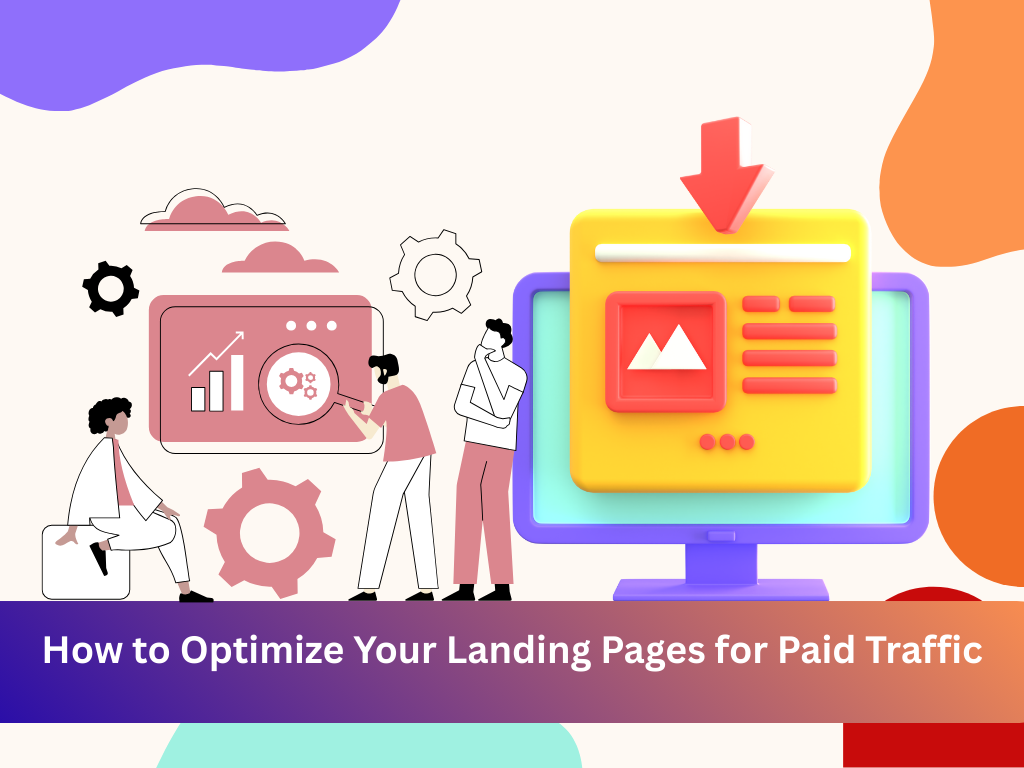
When you’re spending money on paid traffic—Google Ads, Facebook Ads, LinkedIn Ads, or any other platform—every click counts. But if your landing page isn’t converting, that traffic becomes wasted spend. So how do you optimize your landing pages to ensure your ad dollars translate into conversions? Let’s break it down.
Why Landing Page Optimization Matters
- Maximizes return on ad spend (ROAS)
- Improves quality score for lower cost-per-click (CPC)
- Increases conversions and revenue
- Reduces bounce rate and improves user experience
Step-by-Step Guide to Landing Page Optimization for Paid Traffic
1. Ensure Message Match Between Ad and Landing Page
Your landing page should reflect the same message, offer, and tone as your ad.
- Use the same keywords and headlines as your ad copy
- Match the visuals or imagery from the ad to create continuity
- Reinforce the benefit or offer promised in the ad
2. Craft a Clear, Benefit-Driven Headline
Your headline is the first thing a visitor sees. Make it:
- Specific: Highlight the outcome or transformation
- Relevant: Reinforce what the visitor clicked for
- Clear: No jargon or vague terms
Example: “Get 50% Off Your First Order of Custom T-Shirts”
3. Streamline Your Layout for Quick Skimming
Online users scan more than they read. Structure your landing page with:
- A strong headline + subheadline
- Bullet points listing key benefits
- A hero image or short explainer video
- A single, strong CTA (Call-to-Action)
4. Eliminate Distractions
Remove anything that pulls attention away from the conversion goal:
- No top navigation menus
- Avoid external links
- Keep the focus entirely on the offer and CTA
5. Use Social Proof and Trust Signals
Add elements that reduce friction and build credibility:
- Customer testimonials or reviews
- Trust badges (secure checkout, money-back guarantee)
- Client logos or case studies
6. Optimize Your Forms
Your form should be as short and simple as possible:
- Ask only for essential information (e.g., name and email)
- Use clear labels and error handling
- Include a privacy note or reassurance near the submit button
Example:
Better: “Download Free Guide”
Worse: “Submit”
7. Test Different CTA Variations
Your Call-to-Action is crucial. Try different formats:
- Button text: “Start My Free Trial” vs. “Get Instant Access”
- Button color: Try high-contrast colors that stand out
- Placement: Test above the fold vs. bottom of page
8. Mobile-First Design is Non-Negotiable
Most paid traffic comes from mobile. Your landing page should:
- Load quickly (under 3 seconds)
- Use responsive design for all screen sizes
- Have large, tappable buttons
9. Use A/B Testing to Continuously Improve
Split-test different versions of your landing page:
- Headlines
- Layouts
- Visuals
- Offers and CTAs
Use tools like Google Optimize, VWO, or Unbounce to measure which variation converts best.
10. Track the Right Metrics
Don’t rely on guesswork. Track:
- Conversion rate (visitors to leads or customers)
- Bounce rate
- Average time on page
- Click-through rate (CTR) on CTA buttons
Use tools like Google Analytics, Hotjar, or your ad platform’s built-in analytics.
An optimized landing page can dramatically improve your ad performance and ROI. The key is to stay user-focused—make it easy, fast, and valuable for the visitor. Every second counts, and every element on the page should drive toward one goal: conversion.
